We’ve had such a fantastic morning, we chose one of our favourite books and read for pleasure.
”This is the best day ever, can we have a nap and read!?” – I don’t think that’s possible!
Check us out below, reading in our pyjamas.
We’ve had such a fantastic morning, we chose one of our favourite books and read for pleasure.
”This is the best day ever, can we have a nap and read!?” – I don’t think that’s possible!
Check us out below, reading in our pyjamas.
This week, we have started our art week!
We’ve had a brilliant start to learning about Banksy and come across a lot of vocabulary that we haven’t heard of before. Such as:
We’ve used our VIPERS vocabulary skills to match the words to their definitions. Why don’t you ask us at home what the words mean?
This week, we have had another look at the Summarise VIPER. In class, we are reading Oliver Twist and we noticed that the book does not have any chapters. So, being the reading experts that we are, we decided to use our summarising skills to come up with our own chapters.
We identified the main idea using a range of pages, AND then acted the chapters out!
We have studied our local area and got a good sense of WHERE we are in the world. We’ve also looked at our local culture and history to better understand WHO we are and HOW Barnsley was shaped.
We’re now going to compare all of this to a contrasting location, France. Our closest European neighbours.
We always start our topic studies with WHEN and WHERE so we have made a map of France. BUT! We’re Year 4! You didn’t think it would be as simple as that did you?
Mr Swallow gave us a blank map of France and lots of places to look for IN FRENCH!!!!
Thats right! We had to read the locations and find them on maps written in English. It’s a good job we are clever! We soon figured out that some of the places were cities, some rivers, seas or oceans and even some mountain ranges.
All of the places were not on 1 map. We had to use a POLITICAL map to find anything made by humans and a PHYSICAL map to find the natural locations!!! Wow.
This week, we are looking at the Summarise VIPER. Our first Summary activity is a game of charades! The children were brilliant and WE COULD TELL WHAT EVERY SINGLE SCENE from the book was, when they acted it out! Year 4 are true drama queens!!!

Well! I asked for it! I did!
I asked my pupils to pretend to be Nora Batty or Compo and write a recipe for making Yorkshire puddings ‘in character.’ AND…they did!
We had some creative suggestions from our Compos! Such as “spitting in the pan” if you have no oil or “nicking the eggs from under a chicken!”
As for the Nora Battys, they were constantly recommending “Whacking Compo with their broom” and keeping an eye out for him trying to “snog” you!!!
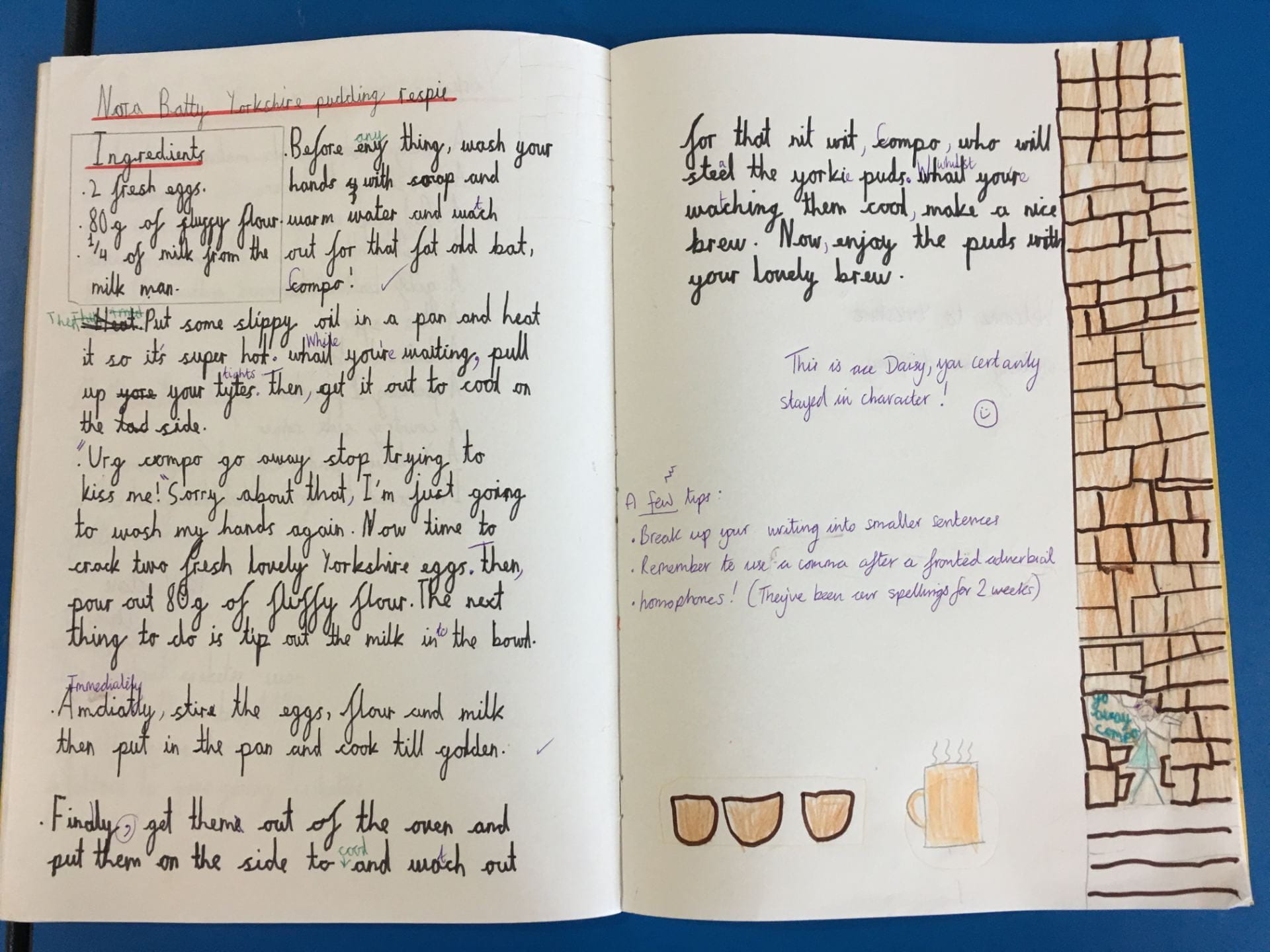

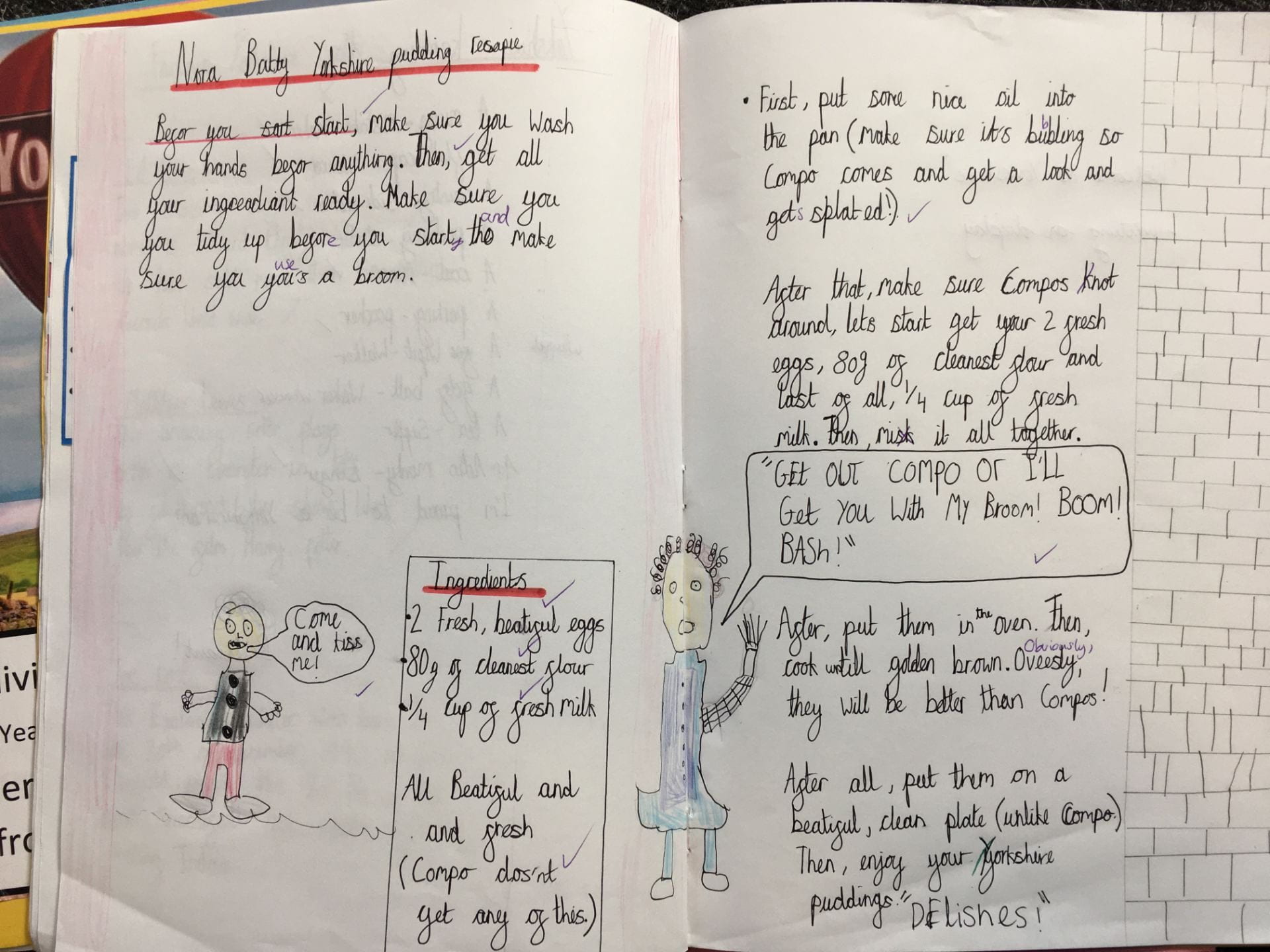



They were great fun and (as well as staying in character) did actually manage to write a recipe that used the features they had identified.
Well done Year 4, that was a VERY independent piece of writing.
Today’s challenge was really tricky.
We are making our own timeline that covers the history of mining in Barnsley. This means it starts before Victorian times and runs all the way to now.
Mining has really shaped and defined our local identity so we couldn’t map the history of mining without including the changes in culture too.
We had to use LOTS of different sources of information to create our timelines:
Mr Swallow had written some important events down but they were all jumbled up so we had to get them into CHRONOLOGICAL ORDER and choose which ones we wanted to use.
We had dozens of books about mining and local history to gather our own information from to add to our timeline.
We had a set of existing timelines covering everything from pop culture to politics, again we could choose the information we wanted to use and add it to our own timeline in the correct place.

Today, we have read How the Grinch stole Christmas!
We enjoyed reading out the story and finishing the rhyming sentences.
We can’t wait to see what’s in store over the 4 weeks! 🙂



Design yourself a set of Top Trumps cards for the heroes and villains from Robin Hood!
You can:
Here is a version of the Robin Hood legend that you read along with…
[embeddoc url=”http://myths.e2bn.org/mythsandlegends/playstory13478-the-legend-of-robin-hood.html” download=”all” viewer=”google” ]
Here are a few comprehension activities to further develop your knowledge of the story and the characters.
[embeddoc url=”https://birdwellyear4.edublogs.org/files/2020/06/robin_hood_and_little_john.docx” download=”all” viewer=”google” ]
Answers:
Vocabulary Focus
R – a few steps
V – flurry, erupted
E – They are carrying bows, they are walking long distances, they fight with a staff, there is a bridge tax
I – he is resigned to his fate – he feels like he will have to fight him now.
S – He stops people crossing the bridge unless they pay him. If they do not pay then he robs them.
[embeddoc url=”https://birdwellyear4.edublogs.org/files/2020/06/Comprehension_Lower_KS2_sample-converted.docx” download=”all” viewer=”google” ]
Answers:
[embeddoc url=”https://birdwellyear4.edublogs.org/files/2020/06/ANSWERS.docx” width=”20%” height=”100px” download=”all” viewer=”google” ]

The task this week will take you all week if you are going to do it properly. We are going to produce a piece of creative writing GOOD ENOUGH TO GO IN YOUR WRITING ASSESSMENT FOLDERS!!!!! That’s right, best writing at home!
Now to get to this best piece, we are going to learn different stages (like we would do in class). Then it will be your job on Friday to put the pieces back together independently in one piece of writing.
I shall add the next step each day…
The Lady of Shalott ends with the death of the eponymous Lady. This type of ending is known as a tragedy. (A sad ending, where people die or do not get what they deserve.) It is also implicit (this means it doesn’t explain why or how the story really ends, you have to guess certain bits, like ‘Why was she cursed?’) This is a very unusual type of ending for a school text but very important to learn about, as sad and scary texts are very good at engaging us emotionally and involving us in the story. Here are some other types of ending, can you apply them to our poem? How would the story have turned out with these different types of ending? (I’ve done one for you, can you give your own twist and explain the rest? you can work with a grown-up)
Twist: It turns out that Lancelot was the one who imprisoned her in the tower and reveals this when he sees her float down to Camelot!!!
Happy ending:
Explicit: (You reveal all the details and explain everything)
The long view (What are the characters’ lives like in years to come?)
The cliff-hanger! (Something happens at the end that leaves us in suspense, the story ends with us dying to know what will happen next!)
So, come up with your own version of each and apply it to the Lady of Shalott. Then, research (ask friends and family) and create a list of stories, books, films or poems which fit into each category. these will help us structure the ending you choose to go for on Friday.
Here is a link to a video of the story in case you’ve forgotten the poem!
Plus a (very simple) storyboard

Today’s learning is all about figurative language. As we know from reading the poem, Tennyson was amazing at using detailed description to paint a picture. For example, instead of saying, ‘winter is coming, he tells us, “willows whiten, aspens quiver.” He is getting us to understand what he is tellings us by giving us clues and painting a picture. We can do the same trick…if I tell you:
“As I stepped out of the door, I shielded my eyes with my hand and squinted, trying to make out the shapes outside. By the end of the street, I had already begun to perspire a little and my new flip flops were blistering my feet.
Can you use the same trick to paint a picture of:
Remember, give clues, don’t tell us what you are doing.
now I want us to work on a grammar skill that we have already visited in class. We are going to use a subordinate clause to add extra information to a sentence. We are going to separate the main clause from the subordinate clause with a comma. like this…
Main clause , Subordinate clause
Mr Swallow forgot to post our challenge, he is getting very old and forgetful.
Subordinate clause , Main clause
Due to the nice weather, I went for a game of football in the garden.
So the main clause is the important information and the subordinate clause adds extra detail. We separate the two with a comma. The subordinate clause can come at the beginning, the end or even in the middle:
Main clause , Subordinate clause , Main clause
I got in and immediately, because of the lockdown, washed my hands thoroughly.
Try out this skill with some sentences of your own. Vary the position of the subordinate clause and remember to separate it from the main clause using a comma.
most importantly, post up your writing so I can read it 😁
We applied the pencil and ink line drawing techniques we learned in unit 1 to create our own portrait of Sir Lancelot, the heroic knight of the round table.
We let ourselves go crazy with sketching pencil, putting as many lines on the page as we wanted and re-doing lines that were not quite right over and over again. When we were happy, we switched to ink and picked out only the best of the pencil lines, removing the rest with a rubber.
We used a combination of coloured pencil and coloured ink to create areas of light and shade in the portrait and then added bright highlights by removing patches of colour with the rubber (we wanted Lancelot’s sword and armour to glisten in the sun like it does in our poem!)
Then we got all digital…
Mr Swallow took photos of all of our art using an SLR camera. We used several steps to then manipulate this image:
Phew! WE ARE GOOD!
We looked at songs with stories in them today (just in case you were wondering why your child has come home humming obscure 60s American folk rock…sorry)!
We also shared books with Year 3, designed and laminated bookmarks and listened to a whole school story with Mr Bailey while chillin’ (is that how you say it kids?) in our jammies.














Was it sticky enough to stick Brigg’s mouth together? Well…some were! We were amazed at how we could all start with the same recipe and ingredients and make such different trays of parkin!!!
They all had one thing in common…they were gorgeous!!! (No, really!) So we sat, reading Danny the Champion of the World and munching parkin…life was good in Year 4 this aft’!
We read a great story in our Yorkshire Folktales book. The legend told us how Filey Brigg was created when Brigg the dragon was tricked into eating a huge bowl of sticky Yorkshire parkin and drowned in the sea!
At the end of the story was a recipe for parkin, well…we just had to make some didn’t we?
Monday afternoon is our library session. It was lovely to see the children enjoying the new books and reading together. REMEMBER TO BRING YOUR OLD TO TO EXCHANGE EVERY MONDAY KIDS!!!!
We compared the Easter story to our class book. We noticed very similar themes and ideas in both Narnia and ancient Jerusalem! (Hopefully, this explains why I am covering the Easter story with the children in November!!!!)
We saw that the central theme of the story is one of sacrifice for people in your care. We saw that this sacrifice led to the resurrection because people had faith in their ‘hero’. We even saw similarities in the locations of the story and the way in which the hero died!
The kids were brilliant at spotting these links and created a booklet comparing the 2 stories!

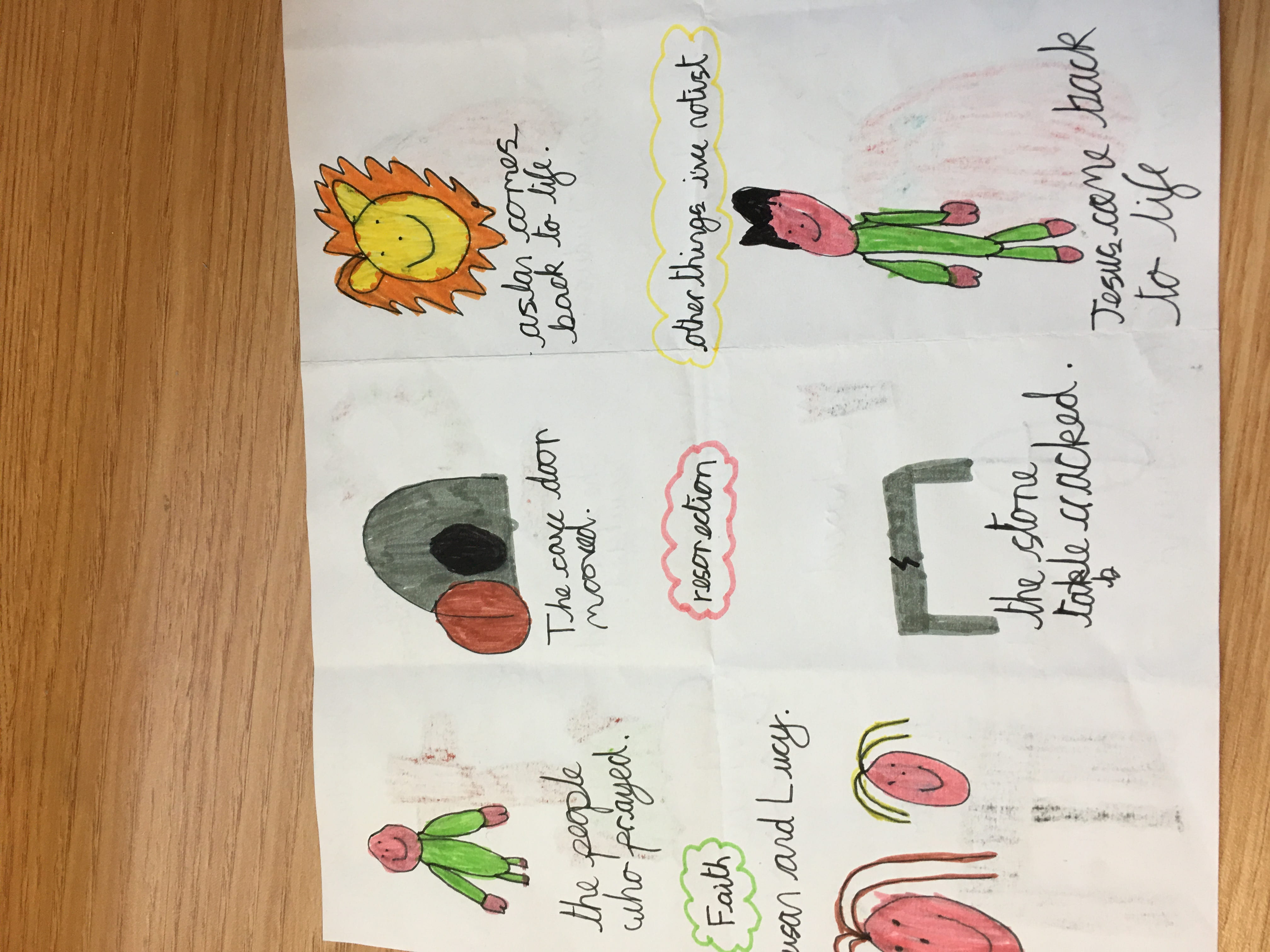


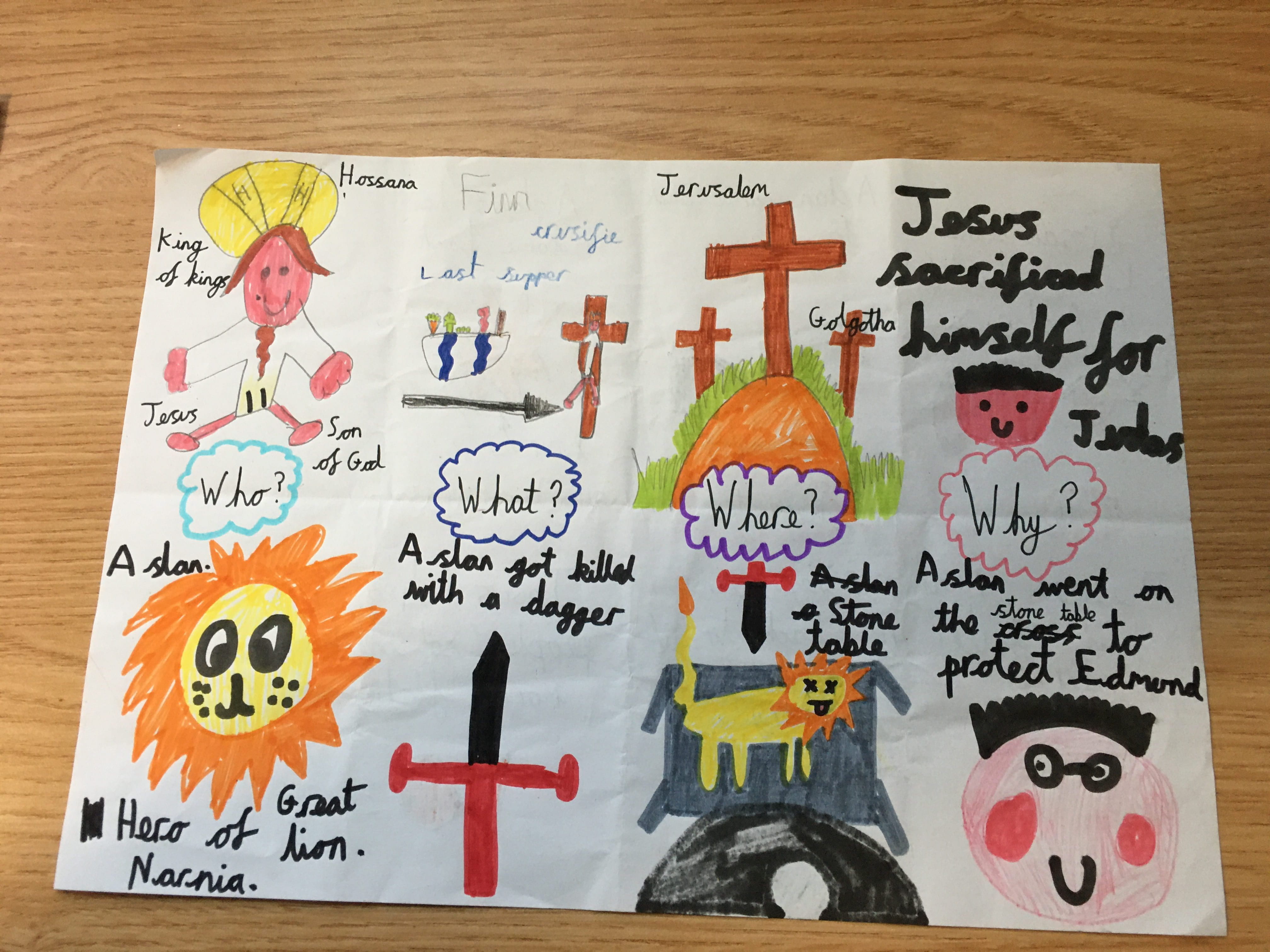

we have been learning skills that help us present our arguments clearly and debate others’ point of view. We practiced in class, using our skills to debate important issues, such as: Should we have to wear a school uniform? Should we have homework? Should we begin the school day earlier or later?
The children split into 2 teams to decide on what their arguments should be and then debate the issue with the other team.
The skills were:
Hopefully, these phrases may sound familiar to our parents because our homework is to go home and win an argument (or friendly debate) using our new-found powers of persuasion!
So if your dinner conversation tonight begins with, “Mum, I really appreciate you want me to eat healthily and that’s because you care, but…” then don’t worry…your child is just doing their homework!
Our new Unit is all about persuasion and influence. We have begun by looking at the way Propaganda Posters were used in WW2 to influence people’s attitudes and opinions. We looked at the tricks that the poster makers had used and pinched them to use in posters of our own.
We split into 2 groups…1 group who wanted people to rise up against the White Witch (by making her seem either evil or incompetent and easy to beat) and 1 group who were on the side of the White Witch (and therefore either wanted to make the Witch look good or make her enemies look foolish). See if you can spot the ways we have tried to influence you…
Today we drank something that we haven’t tasted before. It was something very sweet, foamy and creamy. It warmed us right down to our toes. It was the most delicious hot chocolate ever! We also ate something very sweet with a light centre; the best Turkish delight!
Little to our knowledge the hot chocolate was enchanted by the Queen… now we must get the chocolate out of the water!
Stayed tuned to see what happens…





As Year 4 walked into the classroom this morning, they were presented with a map of Europe with the outline of Australia overlayed on top. This was to try and show the sheer size of the country we are learning about. Working collaboratively in teams, they had to add place names from both Europe and Australia, where the maps overlapped.
We then turned these locations (the “Facts”) into comparative sentences (the “Fancy”). This is a very tricky task and the children enjoyed being able to do something so grown up!
We turned “Fact” into “Fancy” right there and then in the lesson, starting from just a blank map!
Boom! (As you children apparently say????)
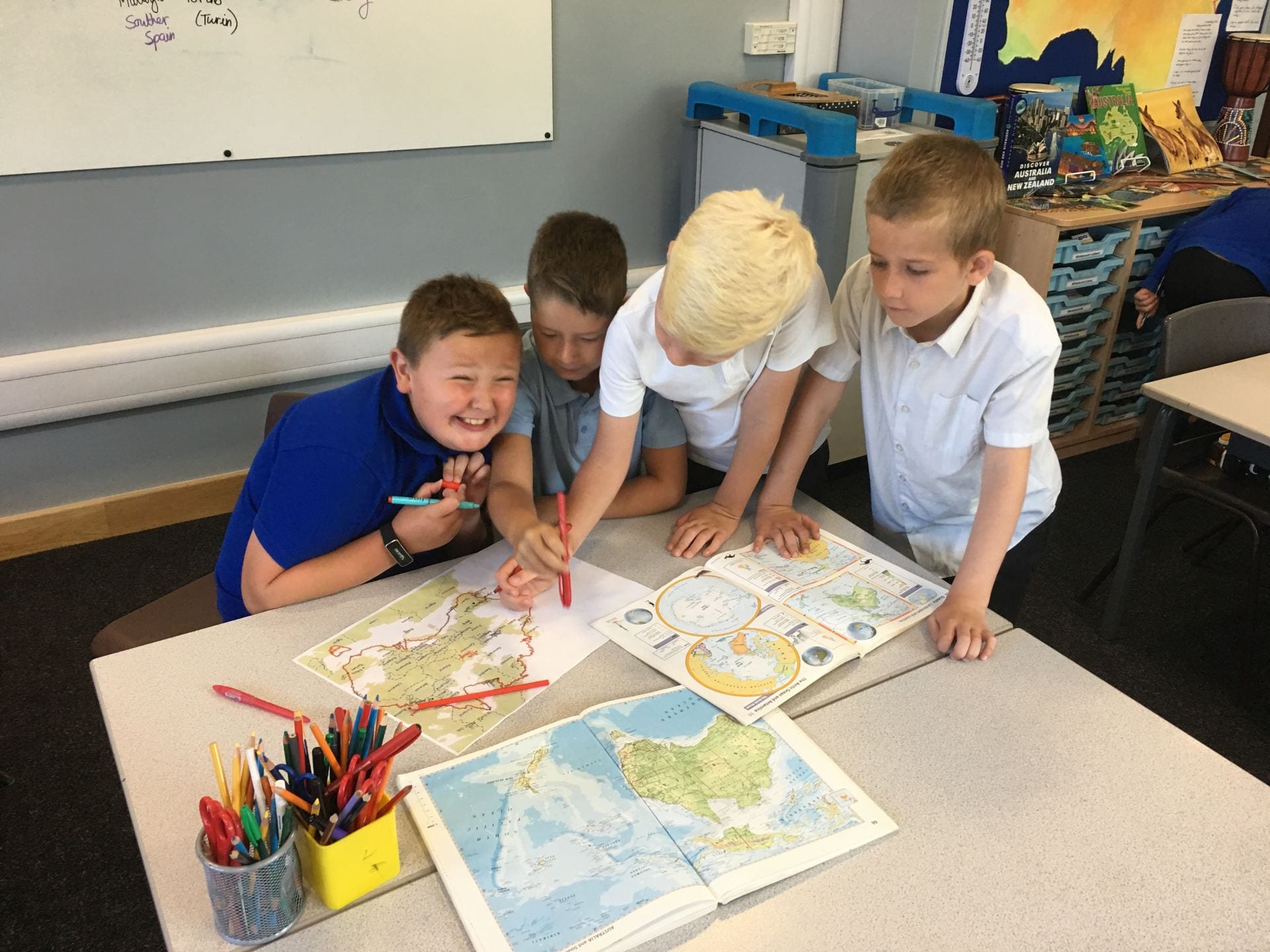


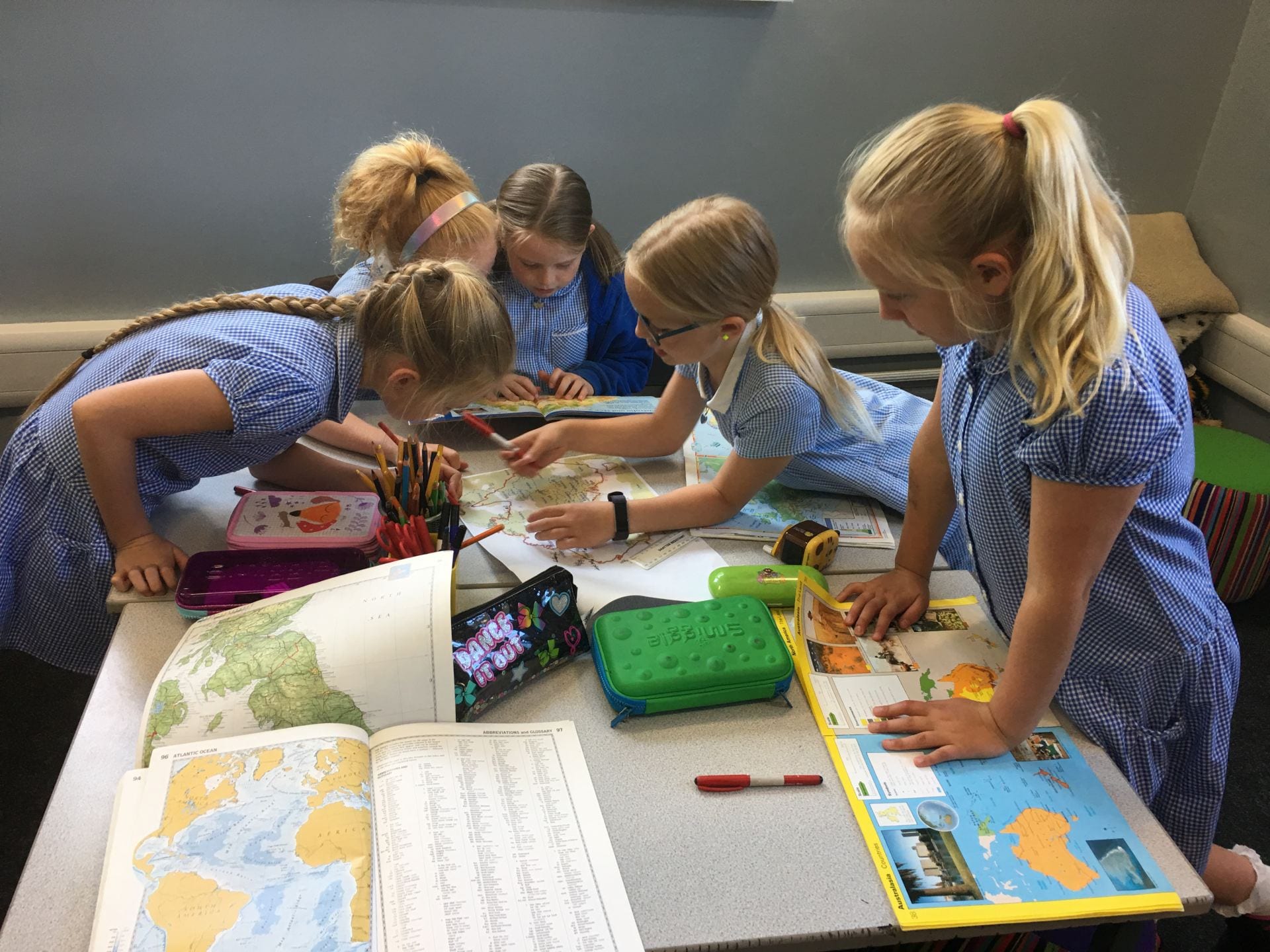
We had to work in small teams to decide if some statements about Australia were true or false. the purpose of the activity was to let me see how much the class already know and spot any misunderstandings they had. The purpose was also to discuss your opinions with your partners and justify your point of view. Later in the topic, we shall have a chance to revisit this work and see if there are any statements we would change our mind about.









